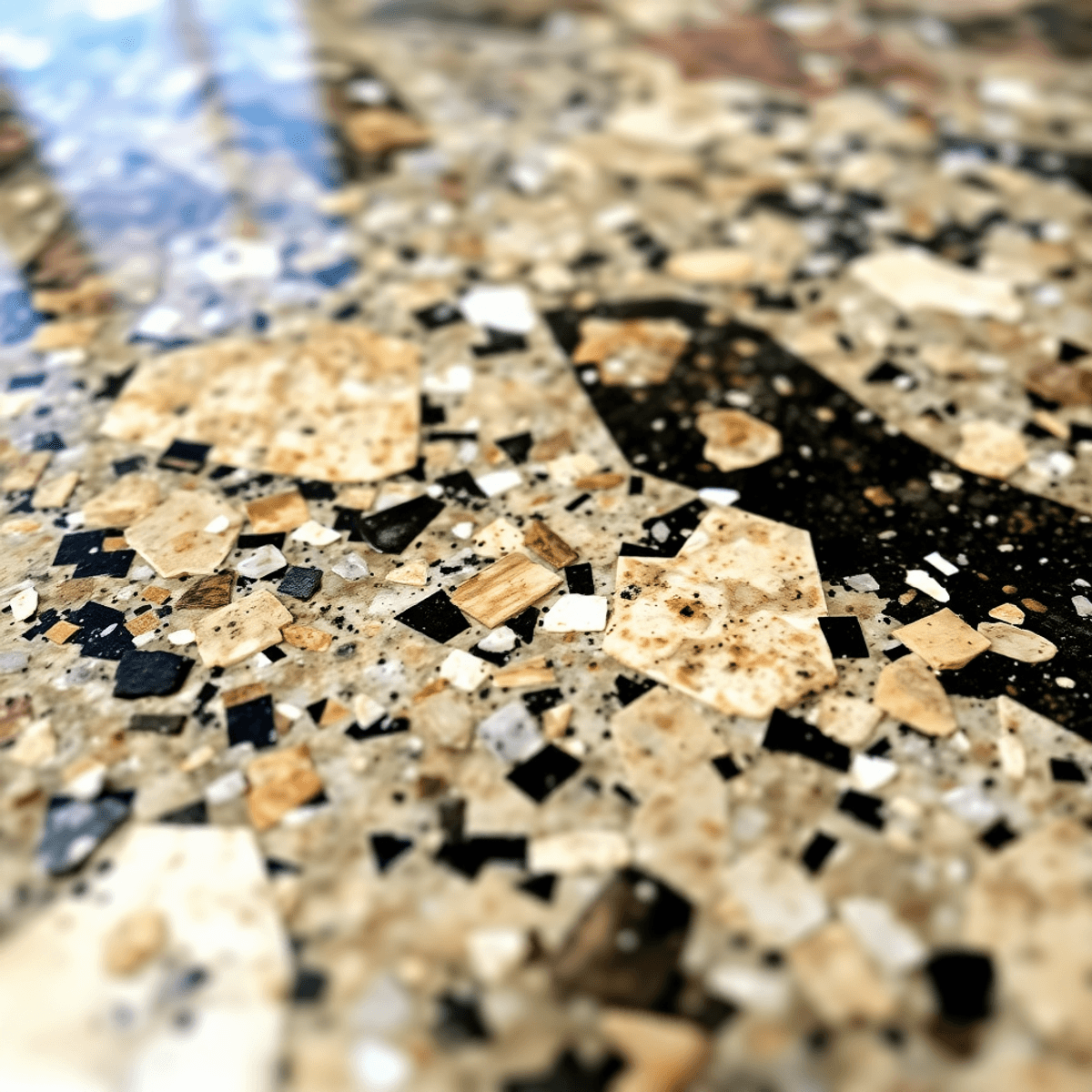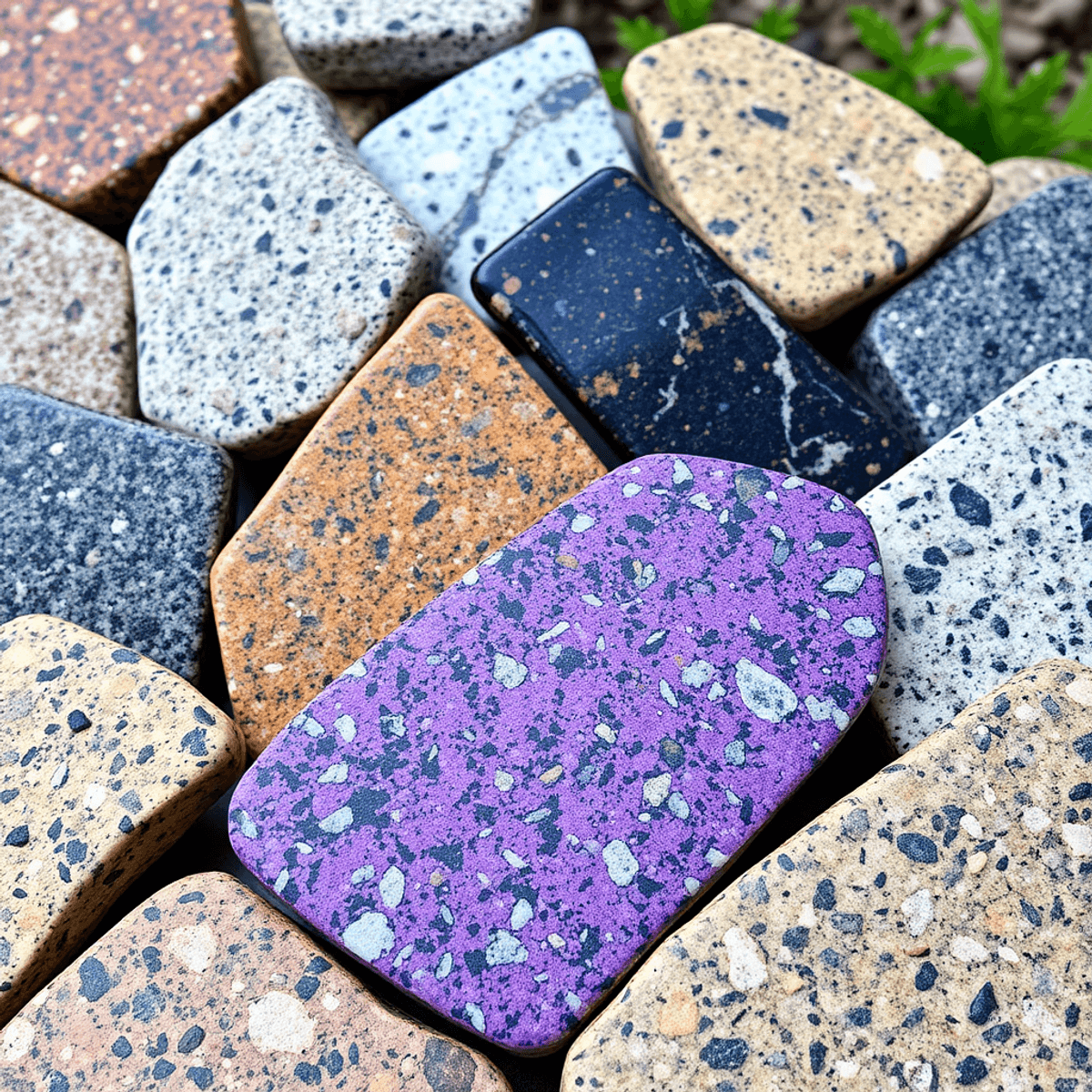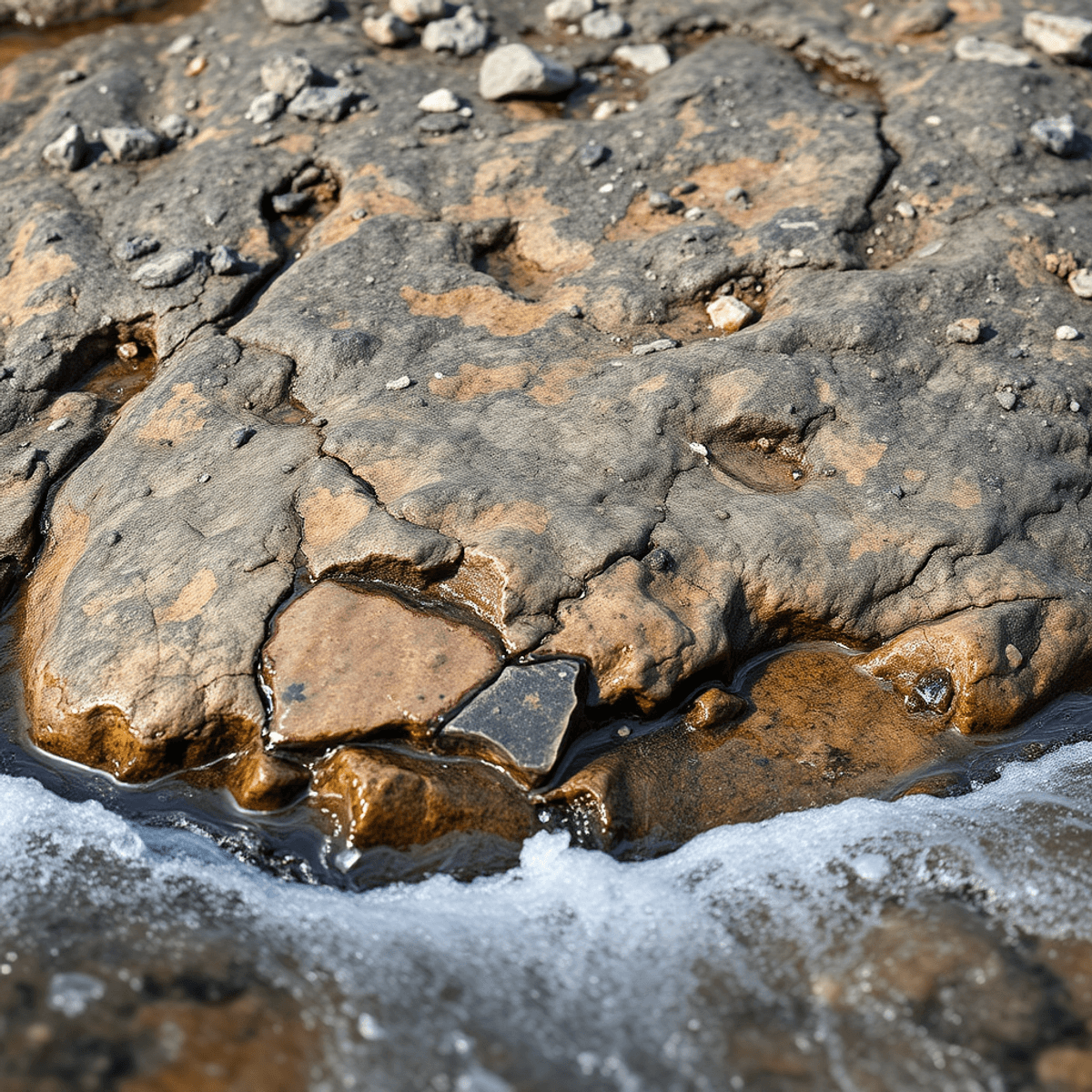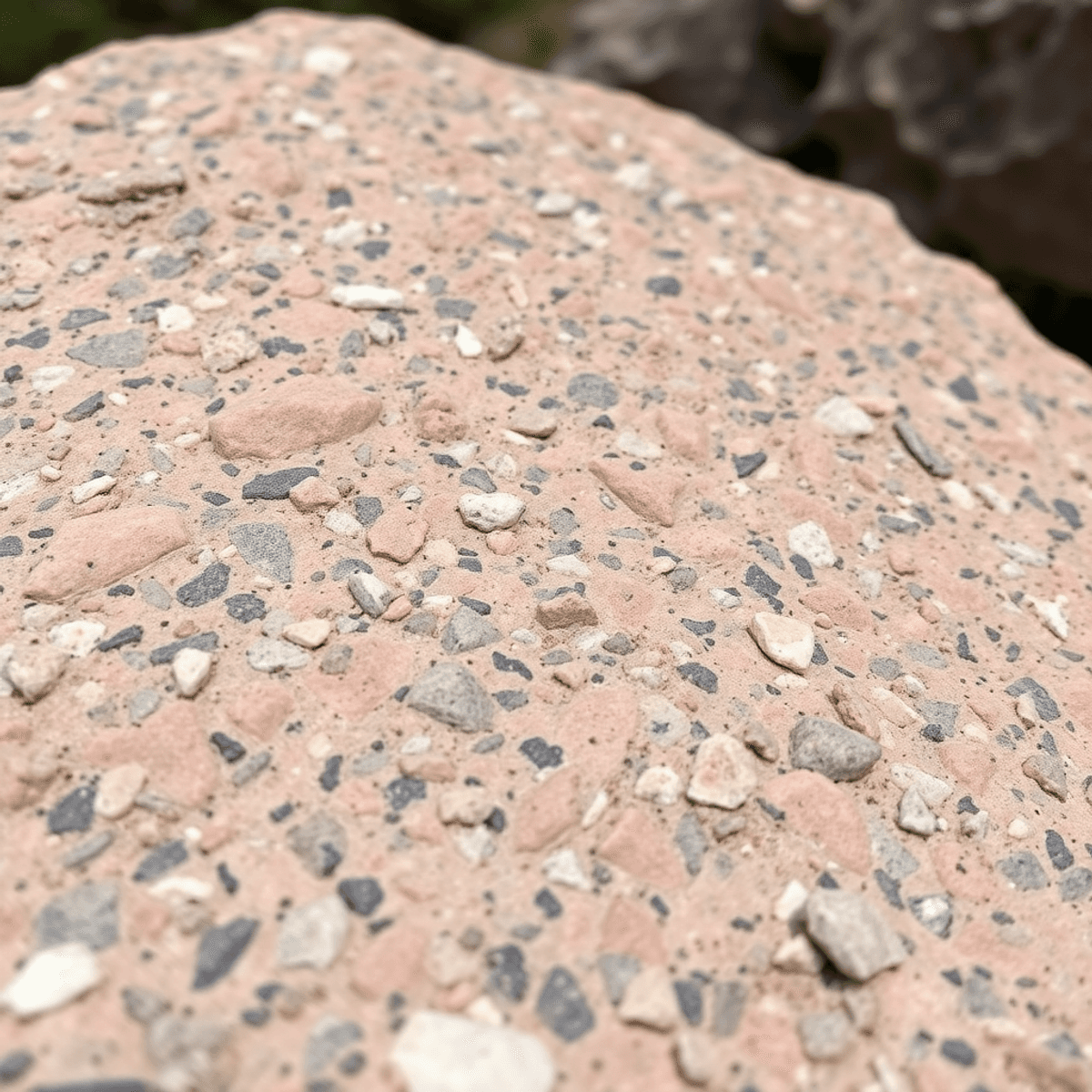Introduction
Granite rock is an intrusive igneous rock formed from slowly cooled molten rock beneath the Earth’s surface. Characterized by its coarse-grained texture, granite consists mainly of quartz, feldspar, and mica. The high silica content gives granite a light color, with variations ranging from pink to gray.
Granite is important in both geology and construction because it is durable and visually appealing. In geology, it helps us understand the composition of the Earth’s crust and its tectonic history. For example, studying granite formations can provide valuable information about past geological events, including extreme weather scenarios like tornadoes, which are often associated with significant geological changes. In construction, granite is preferred for its strength and beauty, making it a popular choice for countertops, monuments, and various architectural applications.
This guide aims to explore the various aspects of granite rock by discussing:
- Geological characteristics
- Physical appearance and texture
- Varieties of granite and their unique features
- Formation processes
- Uses in construction and architecture
- Economic importance and valuable elements found within granites
- Classification methods utilizing the QAP diagram
By examining these topics, you will gain a comprehensive understanding of granite rock’s significance in geology and its diverse applications in modern society.
1. Geological Characteristics of Granite Rock
Granite is classified as a plutonic rock, formed deep beneath the Earth’s surface from slowly cooled molten rock. This process allows for the development of its characteristic coarse-grained texture, which is a result of large crystals that can be easily observed by the naked eye. The light color of granite is primarily due to its high silica content, making it distinct within the igneous rock family.
Major Minerals in Granite
Granite contains several key minerals that contribute to its unique properties:
- Alkali Feldspar: This mineral is responsible for various color variations in granite, ranging from pink to white.
- Quartz: As one of the hardest minerals, quartz enhances granite’s durability and strength.
- Plagioclase: This mineral adds complexity to granite’s composition and can often be seen as white or gray streaks.
These minerals work together to create both aesthetic appeal and structural integrity.
Comparison with Other Rocks
When comparing granite with other igneous rocks such as diorite and gabbro, distinct differences emerge:
- Diorite: This rock has a similar coarse-grained texture but is typically darker due to higher amounts of mafic minerals. It lacks the significant quartz presence found in granite.
- Gabbro: Gabbro is even darker and more mafic than diorite. Its mineral composition includes more iron and magnesium, resulting in a denser and heavier rock compared to granite.
Understanding these characteristics not only highlights granite’s significance but also places it within the broader context of Earth’s crustal composition. The geological attributes of granite make it an essential component in both geological studies and practical applications in various fields.

2. Physical Appearance and Texture
Granite is known for its stunning appearance, featuring a range of colors and distinct textures.
Common Colors of Granite
Granite can be found in several hues, including:
- Off-white to gray
- Pink
- Red
- Yellow
- Brown
The color variations are primarily influenced by the mineral composition. For instance, the presence of potassium feldspar often imparts a pinkish hue, while biotite or hornblende can contribute darker tones.
Texture Variations
The texture of granite is a significant aspect that distinguishes it from other rocks. The following texture types are commonly identified:
- Coarse-grained (Phaneritic): This texture features equigranular grains that are visible to the naked eye. The slow cooling of magma allows large crystals to form, resulting in a rough surface.
- Porphyritic: In this texture, large crystals (phenocrysts) are embedded in a finer-grained matrix. This indicates varying rates of cooling during the crystallization process.
- Pegmatitic: Characterized by exceptionally large crystals, pegmatitic granite forms in the late stages of magma crystallization when minerals have abundant space to grow.
Influence of Mineral Composition
The mineral composition plays a crucial role in determining both the color and texture of granite.
- Felsic Granite: Contains high amounts of silica and light-colored minerals like quartz and feldspar. This type typically exhibits lighter shades such as pink or gray.
- Mafic Granite: Rich in darker minerals like biotite and hornblende, resulting in deeper colors such as dark gray or black.
Understanding these characteristics enhances your appreciation for granite’s aesthetic appeal while also providing insights into its formation processes.
3. Granitic Varieties and Their Unique Features

Granite comes in different types, each with its own unique features shaped by how it was formed and what minerals it contains. Knowing these differences can help you understand the wide range of granite rocks out there.
Differentiation Between Porphyritic and Pegmatitic Granites
- Porphyritic Granite: This type has large crystals, called phenocrysts, embedded in a finer-grained matrix. The different sizes are a result of varying cooling rates during magma crystallization. Common minerals found in porphyritic granite include quartz and feldspar, which give it its distinct look.
- Pegmatitic Granite: This type is known for having exceptionally large crystals. Pegmatitic granite often contains minerals that are rare in regular granites. The slow cooling of molten rock allows for the growth of these big crystals, which can reach several centimeters in length. These rocks frequently host valuable minerals such as tourmaline and beryl.
Characteristics of Orbicular and Graphic Granites
- Orbicular Granite: This variety has concentric layers of minerals that look like small orbs or spheres. The formation process usually involves minerals crystallizing around a nucleus, such as a fragment of an earlier rock or mineral. The striking patterns make orbicular granite visually appealing, often used in decorative applications.
- Graphic Granite: Named for its unique texture resembling ancient script, graphic granite contains interlocking quartz and feldspar crystals arranged in a way that mimics writing. This distinct pattern arises from the crystallization process where quartz forms alongside feldspar under specific conditions.
Miarolitic Cavities and Their Mineral Contents
Miarolitic cavities are empty spaces found within granitic rocks, often lined with mineral deposits. These cavities form when gases escape from cooling magma, creating room for minerals to grow.
Common minerals found in these cavities include:
- Quartz
- Fluorite
- Tourmaline
- Beryl
These mineral-rich areas are significant not only for their aesthetic value but also for their potential economic importance in mining operations.
Understanding these varieties deepens your appreciation of granite rock’s complexity and versatility in various applications.
4. Formation Processes of Granite Rock
Granite rock formation primarily occurs through magma crystallization, a multi-stage process that takes place deep within the Earth’s crust. The cooling of molten rock, or magma, allows minerals to crystallize and aggregate, resulting in the coarse-grained texture characteristic of granite.
1. Magma Crystallization
This process begins with the cooling of magma at varying depths. As temperature decreases, minerals start to crystallize at different rates due to their distinct melting points. Feldspar and quartz are typically among the first to form, contributing to granite’s unique mineral composition.
2. Nucleation Process
The initial stage in crystal formation is known as nucleation. When the temperature drops sufficiently, small clusters of atoms form stable arrangements, creating the first solid mineral crystals. These nuclei grow as more atoms attach themselves. In granite, this gradual growth allows for large crystal sizes that are visually distinguishable.
3. Granitic Pegmatites
Unique varieties of granite, such as pegmatites, exhibit rapid crystal growth due to specific conditions present during their formation. These formations occur when magma cools slowly but under high pressure and water-rich environments. The presence of volatiles accelerates the growth rate of crystals, resulting in exceptionally large minerals often found in pegmatitic granites.
Hydrothermal processes also play a significant role in altering granite minerals after its initial formation.

4. Hydrothermal Alteration
This involves the interaction between heated water and existing granite rock. As hydrothermal fluids circulate through fractures, they can introduce new minerals or modify existing ones by leaching elements and redistributing them within the rock structure. This alteration can enhance or change the physical properties of granite over time.
Understanding these processes is essential for geologists and those interested in granite’s diverse applications and characteristics. It’s also interesting to note that while granite is primarily formed through these processes, other volcanic rocks such as volcanic breccias, which have their own unique types and formation processes, can provide valuable insights into Earth’s volcanic history.
5. Uses and Applications of Granite Rock in Construction and Architecture
Granite is a favored material in the fields of construction and architecture due to its numerous beneficial properties. Its durability, aesthetic appeal, and versatility make it an ideal choice for various applications.
Common Uses of Granite
- Building Stone: Granite is commonly used as a construction stone for structures such as bridges, buildings, and walls. Its strength provides resilience against weathering, erosion, and other environmental factors.
- Paving and Landscaping: The stone is often employed in paving roads, walkways, and patios. When used in landscaping, granite enhances the visual appeal of outdoor spaces with its natural elegance.
- Monuments and Memorials: Due to its ability to withstand the test of time, granite is frequently chosen for monuments and headstones. Its permanence ensures that memorials remain intact for generations.
Popularity of Granite as Countertops
Granite countertops have surged in popularity over recent years. Homeowners and designers alike appreciate granite’s unique patterns and colors that can complement any kitchen or bathroom design. Some key attributes include:
- Heat Resistance: Granite can endure high temperatures without damage, making it suitable for kitchens.
- Scratch Resistance: The hardness of granite helps prevent scratches from utensils or heavy objects.
- Low Maintenance: Sealing granite surfaces allows for easy cleaning while maintaining hygiene.
The combination of functionality and beauty makes granite countertops a sought-after option in modern homes. Different finishes enhance the appearance further—polished surfaces provide shine while honed finishes offer a more matte look.
Granite’s multifaceted uses extend beyond mere aesthetics. It plays a critical role in enhancing structural integrity while delivering enduring beauty to both commercial projects and residential spaces.
6. Economic Importance and Valuable Elements Found in Granite
Granite is not only significant in geological terms but also holds substantial economic value due to the valuable elements and gemstones found within its formations. The exploration of granitic pegmatites often reveals essential minerals that have great industrial and commercial significance.
Valuable Elements:
- Tin: This metal, often mined from granitic pegmatites, is crucial for various applications, including electronics and soldering materials.
- Thorium: Another valuable element, thorium has garnered interest due to its potential use as a nuclear fuel. Its presence in granite can make certain regions economically promising for mining operations.
Gemstones Associated with Granites:
Granite’s mineral composition lends itself to the formation of several gemstones, adding aesthetic and economic value. Some of the notable gemstones include:
- Tourmaline: Known for its striking colors and crystal forms, tourmaline is often found in granitic pegmatites. It is highly sought after in jewelry making.
- Beryl: This mineral can form beautiful gemstones such as emeralds and aquamarines. Beryl deposits related to granite have made significant contributions to the gem market.
The intertwining of geology and economics highlights granite’s multifaceted nature. Beyond serving as a robust building material, granite supports various industries through its rich mineral content. Exploring these valuable elements not only enhances our understanding of granite rock but also emphasizes its role in modern economies.
7. Classification Methods for Granitic Rocks Using the QAP Diagram
Granite classification is essential in geology, particularly for understanding the diverse range of granitic rocks. One of the primary tools used for this purpose is the QAP diagram. This diagram categorizes granitoids based on their mineralogical composition, specifically focusing on three key minerals:
- Q (Quartz)
- A (Alkali Feldspar)
- P (Plagioclase)
Overview of Granitoid Classifications
The QAP diagram enables geologists to visualize the relative proportions of these minerals within a granitic sample. By plotting the content of these minerals on a triangular graph, you can classify granitic rocks into various categories such as:
- Granite: High quartz and alkali feldspar content.
- Granodiorite: Intermediate quartz and plagioclase levels.
- Diorite: More plagioclase than quartz and alkali feldspar.
An additional classification tool is the ASI index, which stands for the Aluminum Saturation Index. This index helps determine whether a granitoid is peraluminous, metaluminous, or peralkaline based on its aluminum content relative to its alkaline and calcium components.
Influence of Mineralogy on Classification
Mineralogy significantly influences how granitic rocks are classified. The specific ratios of quartz, feldspar, and other minerals affect not only the rock’s classification but also its physical properties and aesthetic characteristics. For instance:
- Rocks high in quartz tend to be lighter in color and possess greater durability.
- Variations in alkali feldspar can lead to different hues, such as pink or red granite.
Understanding these classifications aids in recognizing geological histories and provides insights into the conditions under which these rocks formed. The interplay between mineral composition and geological processes makes this classification method a vital aspect of granite study in geology.
Conclusion: The Enduring Significance of Granite Rock in Geology, Construction, and Beyond
Granite rock is important for both studying the Earth and practical uses. Its significance can be summarized through several key points:
- Geological Importance: Granite provides insights into Earth’s geological history, forming from slow crystallization processes beneath the surface. Studying granite formations helps geologists understand tectonic activity and magmatic differentiation.
- Construction Versatility: Its durability and aesthetic appeal make granite a favored material in construction. From countertops to monumental architecture, granite’s strength ensures longevity while enhancing visual allure.
- Future Research Opportunities: As technology advances, new methods for exploring granite’s mineral composition may lead to discovering valuable resources and innovative applications. Granite continues to be a subject of interest for both academic research and industry use.
This Guide to Granite Rock outlines the many aspects of granite, emphasizing its role in shaping landscapes and contributing to human endeavors. The enduring nature of granite ensures its relevance in future research, construction, and environmental studies, marking it as a vital component in understanding our planet and enhancing our built environments.

